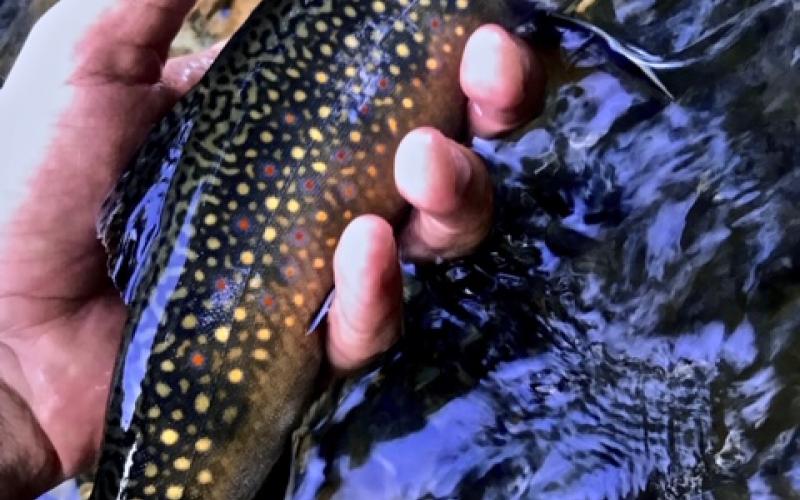Brook trout in Vermont grow on trees

Wild brook trout are doing very well in Vermont. A recent statewide assessment found that the abundance of brook trout in streams and rivers across the state is the same now as it had been in the 1950s and 60s. This assessment did not evaluate the cause for this success, but it would be reasonable to attribute a large portion of it to the health of streamside forests throughout the state.
Brook trout need streams and rivers that are cold, clean, complex, connected, and unconstrained. Streamside forests help provide many of these habitat requirements. Cold temperature is critically important for brook trout, they are rarely found in streams that exceed 68F. Streamside trees help keep the water cool by shading it from the sun. Many streams and rivers in Vermont never exceed 60F even during the hottest days of the year in large part because of shading by the dense streamside forest canopy. These are the streams in which brook trout thrive!
Sediment and pollutants are another threat to brook trout. Excess sediment can irritate their gills, reduce feeding, and when it settles on the bottom, it can suffocate the nests where baby trout develop or cover the aquatic bugs which they feed upon. Streamside trees support healthy brook trout habitat by filtering pollutants and sediment from the adjacent land before it can enter the stream, and stabilizing the banks and limiting erosion.
Brook trout also thrive in streams that are complex with a mix of depths, flows and cover. Streamside trees add to this complexity while standing and after they fall into the water. Trees along the bank can be undercut providing cover for trout to hide from predators. Trees that fall into the river can form scour pools which trout prefer, and provide cover for feeding or protection from predators or high flows. Research in Vermont has shown that brook trout abundance can be up to 200% higher in stream reaches with wood jams than in comparable stream reaches without.
No matter how you look at it, brook trout in Vermont grow on trees!
Contributed by Will Eldridge, Aquatic Habitat Biologist, Vermont Fish & Wildlife Department